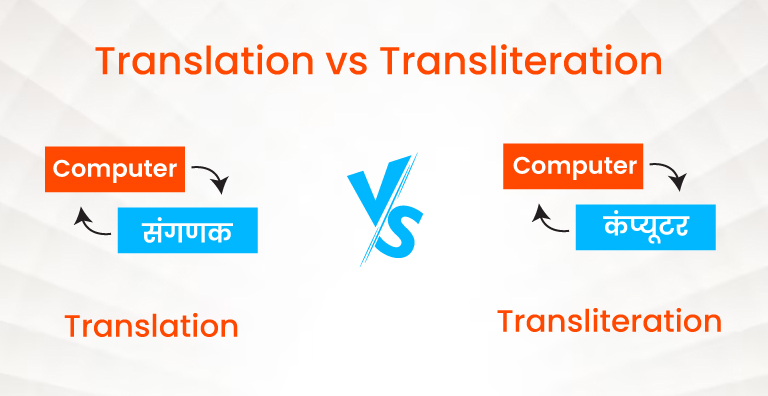Are you planning to go global? Then, as a business endeavoring to do so, we reckon you understand the significance of multilingual communication. However, while communicating with your target audiences in their language or multiple ones, you should use the right approach. Translation and transliteration are two common ones in this regard. So, let’s review translation vs transliteration and determine which one is the right approach for multilingual communication.
Translation vs Transliteration – Key Differences
At the outset, let’s look at key differences between translation and transliteration.
| Definition | Translation involves converting text in one language to the another to convey the right meaning. | Transliteration refers to transferring a word from the alphabet of a particular language to another. Thus, transliteration only provides you the idea of how a particular word is pronounced by placing it in a familiar alphabet. |
| Expertise Required | The translator should be an expert in both the languages involved. | The transliteration expert should be proficient in the source language. |
| Audience Comprehension | The target language is extensively understood by the target audience. | It may be confusing for those who do not know the source language. |
| Cultural Context | Translation modifies or aligns the text to fit a particular cultural context. | On the other hand, transliteration maintains the original brand name pronunciation. |
| Cost | Translation is more complex and requires a higher degree of expertise. Hence, it is usually more expensive. | Transliteration is more straightforward. Hence, it doesn’t cost as much to transliterate something. |
| Time Required | Translation involves various technical, linguistic and cultural complexities. Hence, it can take time to translate a particular piece of content. | Transliteration isn’t as complicated. Hence, it doesn’t take as much time. |
Translation vs Transliteration – When to Use What?
While between translation and transliteration, you should consider various factors to ensure you use the right approach for multilingual communication. Accordingly, let’s look at some essential considerations before you make a choice.
Audience Understanding
One of the first aspects to consider is the understanding level of your audience. If your primary objective is to ensure your audience comprehends the meaning of a particular content or message, you should use translation.
Cultural Accuracy
Cultural inaccuracies may lead to turnoffs and ruin your endeavors to use language as a tool to establish your foothold in a particular market. However, translation plays a crucial role here. With their expertise in the target language, translators adapt to the cultural references, expressions, idioms, etc., and make the translated content more culturally accurate and resonating with the target audiences. Hence, in situations like these, you should use translation instead of transliteration.
Cost and Time
Translation is relatively more expensive and requires more time. However, you cannot choose transliteration only because it is quicker and more reasonable, especially at the cost of accuracy and target audience needs. Making the right choice based on your needs and applications can help make a difference.
Applications
Pronouncing Words
In some cases, the only objective will be to help the audience pronounce foreign terms or words. In such situations, transliteration can help serve the purpose.
Branding and Marketing
Another significant area where transliteration can prove useful is branding and marketing. It can help a company maintain brand identity across various linguistic contexts while ensuring ease of pronunciation. However, in some cases, the marketing campaigns require adapting to the cultural context of a particular market. If that’s the case, you should use translation. Thus, in situations like these, a blend of translation and transliteration can help you make a marketing campaign more effective.
Technical Content
Technical documents are intricate and involve various technical complexities. While dealing with technical content, translation may lead to confusion. Hence, you may prefer transliteration to maintain a certain level of consistency in terminology and to avoid confusion arising from the effort to maintain meaning, linguistic accuracy, etc.
Translation or Transliteration? Leave it to Us!
Translation and transliteration are essential aspects of multilingual communication. Hence, using the right thing in a particular context is necessary to cater to the audience’s needs appropriately. Having confusion or a dilemma is understood. But why deal with it when you have LinguaSol? Our solution Linguify is adept to handle your multilingual communication needs. With expertise in over 100 Indian and foreign languages and features that handle SEO, data security, and website change management, Linguify proves a sensible choice for multilingual communication.
Click to explore Linguify or please email us at sales@linguasol.net to learn more about it!
Ref. No- LSB4241044

